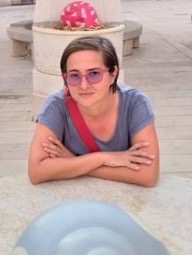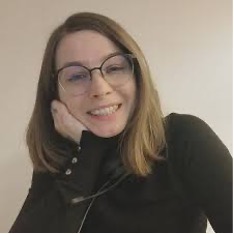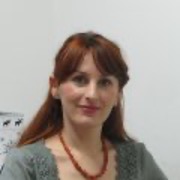CHILDES Croatian Corpus of Preschool Child Language

|
Gordana Hržica
Faculty of Education and Rehabilitation Research
University of Zagreb
gordan.hrzica@erf.unizg.hr
|

|
Sara Košutar
Language and Culture
UiT The Arctic University of Norway
sara.kosutar@uit.no
|

|
Tomislava Bošnjak Botica
Institute for Croatian Language
tbosnjak@ihjj.hr
|
| Participants: | 60 |
| Type of Study: | interview |
| Location: | Croatia |
| Media type: | audio |
| DOI: | doi:10.21415/FGAE-1B80 |
Browsable transcripts
Download transcripts
Link to media folder
Citation information
In accordance with TalkBank rules, any use of data from this corpus must be accompanied by at least one of the above references.
Hržica, G., Bošnjak Botica, T., Košutar, S. (2023). Stem overgeneralizations in the acquisition of Croatian verbal morphology: Evidence from parental questionnaires. Word Structure, 16:2-3, 176-205
Hržica, G., Košutar, S., Botica, T. B. and Milin, P. (2024). The role of entrenchment and schematisation in the acquisition of rich verbal morphology. Cognitive Linguistics. https://doi.org/10.1515/cog-2023-0022
Project Description
The Croatian Corpus of Preschool Child Language consists of transcripts of conversations from 60 participants, who are monolingual speakers of Croatian (ages 3;00 to 3;11 and 5;00 to 5;11). These recordings were conducted in Zagreb and the Zagreb County. Each child was interviewed by an adult experienced in working with preschool children. The interviews followed a specific set of questions. All children were asked one common set of questions, with additional questions posed to the older children (details provided in the Procedure section). Each transcript is accompanied by an audio file. Additionally, the corpus includes an MS Excel spreadsheet containing demographic data for each speaker. The data for each speaker, presented in individual rows, includes gender, chronological age, and a reference to the corresponding transcript.
Sociolinguistic situation
Zagreb, the capital and largest city of Croatia, serves as the political, economic, and cultural hub of the country. It has a population of approximately 800,000, with around 1 million people in the surrounding areas. The sociolinguistic situation in Zagreb is characterized by the predominance of Standard Croatian, which is the official language and is widely used in education, media, and government. Standard Croatian is based on the Shtokavian dialect, which forms the foundation of the language used nationwide. Alongside Standard Croatian, the local Kajkavian dialect is also spoken, particularly among older generations and in informal settings. Kajkavian, distinct in its phonological and lexical features, plays a significant role in the regional identity of Zagreb's inhabitants. Corpus data were collected in two central neighborhoods in Zagreb and in one small city in the Zagreb County.
Procedure
Data were collected from 2021 to 2022. Prior to this, we obtained approvals from the Ethics Committee of the University of Zagreb, Faculty of Education and Rehabilitation Sciences, as well as from the Ministry of Science, Education and Youth of Croatia. Before data collection, parents signed informed consent forms. They were informed that their data would be published as part of a corpus but would be anonymized. They could, and still can, withdraw from this study and/or withdraw their transcripts from the corpus. Children were informed that they were free to withdraw from the activities at any time. Language sampling was performed by three investigators experienced in working with children, who had access to participants to facilitate recruiting. They were trained to follow interview protocols consisting of specific sets of questions. Questions were adapted from Paradis (2005) and Armon-Lotem et al. (2008). All children answered 14 sets of questions, while only older children (5;0 to 5;11) answered an additional 6 sets of questions.
Questions (all participants)
After introductory questions, children were asked:
Questions about the Child and Their Family
- Do you have a brother or sister? How old are they? Do they go to nursery/daycare? What do they do there? What games do they like to play?
- Tell me something about your parents. Does your father work? What does he do? Does your mother work? What does she do? What do you do with your mom? What do you do with your dad?
- How old are you? When is your birthday?
Some children may not know when their birthday is. If they don't know, ask them what the weather is like around their birthday or if it has already passed or is yet to come. Let the child say as much as possible on this topic.
- What is your favourite food? Can you tell me how this food is prepared? (If the child's answer is 'no', ask: Is there any food you know how to prepare?) What else do you like to eat? What don't you like to eat? Why?
- Do you have a pet? Tell me something about him or her. What does it look like? What is its name? What colour is it?
- Tell me something about your grandmother. What is her name? How old is she? What do you like to do with her?
- Tell me something about your grandfather. What is his name? How old is he? What do you like to do with him?
Questions about Friends
- Who is your best friend/who are your best friends? Tell me their names. Tell me something about them. What do they look like? What do they like to do?
- Tell me something about the other children in your group. What do they like to do? What games do you play? Do you go outside? What games do you play outside?
Questions about Activities
- What did you do yesterday? What did you do over the weekend/when you didn't go to daycare? Where do you often go with your family? What do you do there?
- What did you do before daycare?
- What will you do after daycare?
- What games and toys do you like the most? Why? Tell me how to play _______________ (name of the game the child likes).
- What movie/cartoon/video/series did you watch last? Tell me what it was about ________________ (name of the movie/cartoon/video/series). What is your favourite cartoon? [example: the child answers 'Dora'] Tell me something about Dora. Why do you like it? Who are Dora's friends? (continue with similar questions)
Additional questions for children aged 5;0 to 5;11
For older children the procedure was the same, but they were asked additional questions about Seasons and Holidays:
- Do you know what day of the week it is today? Do you know which month it is? Do you know which season it is?
- Which month/season do you like the most? Why?
- What is __________________? [name the closest major holiday or annual event, for example, Easter, Christmas, carnival] What will you do? How is _________________ celebrated? How do you celebrate _________________ in daycare?
and about the Future
- What would you like to be when you grow up? Why? Tell me what you will do when you are grown up and have your own children.
- When are you starting school? What will you do when you go to school, in the first grade? What do children usually do in school? What is the difference between daycare and school?
- Do you have any wishes? If I were a fairy, what three wishes would you make? Why?
Investigators were asked to avoid questions that can be answered with yes or no, unless the child has been talking for some time. Instead of questions like 'Do you watch TV?' or 'Do you like cartoons?' they should have said 'Tell me something about the cartoon…'.
All audio files were transcribed, coded and transcripts were linked with audio files.
Participants
Participants in the study were children aged from 3;0 to 5;11 (one group form 3;00 to 3;11 and the other form 5;00 to 5;11), approximately equally distributed across the age groups (three-year-olds: N=31, five-year-olds: N=29). All children exhibited typical language development. Their results on the Croatian versions of the Test for the Reception of Grammar (TROG:2-HR; Bishop et al., 2014) and the Peabody Picture Vocabulary Test (PPVT-III-HR; Dunn et al., 2009) were within the typical developmental range (TROG: min = 85, max = 141, M = 107; PPVT: min = 82, max = 143, M = 119). There were 31 three-year-olds (F=15, M=16) and 29 five-year-olds (F=14, M=15)
References
Bishop, D. V. M., Kuvač Kraljević, J., Hržica, G., Kovačević, M., & Kologranić Belić, L. (2014). Test razumijevanja gramatike – TROG-2:HR [Test for Reception of Grammar, 2nd edition]. Naklada Slap.
Dunn, L. M., Dunn, L. M., Kovačević, M., Padovan, N., Hržica, G., Kuvač Kraljević, J., Mustapić, M., Dobravac, G., & Palmović, M. (2009). Peabody slikovni test rječnika, PPVT-III-HR [Peabody Picture Vocabulary Test, 3rd edition]. Naklada Slap.
Paradis, J. (2005). Grammatical morphology in children learning English as a second language: Implications of similarities with specific language impairment. Language, Speech, and Hearing Services in Schools, 36(3), 172-187. doi:10.1044/0161-1461(2005/020)
Armon-Lotem, S., Walters, J., & Gagarina, N. (2008). The acquisition of Hebrew as a second language: The role of language-specific factors in bilingual children with Specific Language Impairment (SLI). Applied Psycholinguistics, 29(1), 61-88.
Acknowledgements
Acknowledgements
We gratefully acknowledge the support of the UK Arts and Humanities Research Council (grant no. AH/T002859/1) for the project "Feast and Famine: Confronting Overabundance and Defectivity in Language." Some authors were additionally supported by the project "Morphological Overabundance in Croatian Language" (MOPREH, NextGenerationEU). This work would not have been possible without the help of all investigators and transcribers, namely: Lana Kologranić Belić, Zrinka Urukalović, Andrea Adašević, Majda Čadež, Anđela Elinor Kožul and Valentina Kišan, Ana Martinović, Dora Alilović. We are deeply grateful for their contributions.


